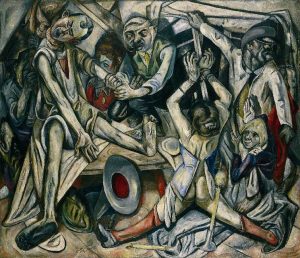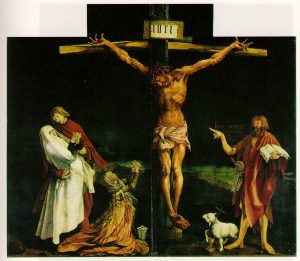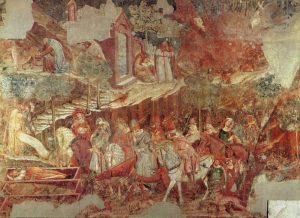In the bright crystal of your eyes
Show the havoc of fire, show its inspired works
And the paradise of its ashes
Paul Eluard
In her “Blake and Antiquity”, Kathleen Raine, the eminent scholar of William Blake, writes in the chapter “The Nether-World of Alchemy”, about Blake’s paracelsian influences. Perhaps one could take it as a mark of Blake’s genuine Gnosticism that in his visionary world, nature and forests are always symbolic of evil. His shadowy female, Vala, roams “in forests of eternal death, and shrieking in hollow trees”.
The forests especially are associated with smoke and fire. According to Kathleen Raine, Blake is here following the ideas of Paracelsus on nature’s Great Mystery. Here nature is seen as in eternal flame, always burning as it grows, endlessly returning to the nothing from which it emerges. Thus all of nature is essentially but a heap of ashes, and her creatures but fumes and smoke. Thus the dark female spirit of the woods, the personification of “the ever-growing, the ever-consuming mystery of nature”, is called The Demoness of Smoke.
In India, there is also a fierce Goddess, called Durga, who, like Vala, is dressed in red and associated with forest fires. Like the demoness Vala, who shrieks in the hollow trees, Durga is originally, in her earlier form as Shakambari, a devouring goddess of vegetation from whose body the different plants grew, and who has Her home in the ghostly-looking sheora tree, that is a traditional habitant of demonesses in India. But although Durga is a mother of demons, she is also, and most prominently, the slayer of demons.
In the 2nd chapter Devi Mahatmya, dedicated to Mahalakshmi, the gods are losing their battle against the demi-gods, when they bring forth Durga from their combined anger, giving each Her their signature weapons, and a lion for Her to ride on into the cosmic battle field. Here are two examples of Her association with forest fires from the Devi Mahatmya:
Her lion mount, shaking its mane in fury, stalked among the throngs as fire rages through forest. (2.52)
In an instant, Ambika led that vast legion of foes to its destruction, as quickly as fire consumes a heap of straw and wood. (2.67)
The scope of this cosmic forest fire is lucidly clarified by Brahmas’ words in the 1st chapter:
By you is this universe supported, of you is this world born, by you it is protected, O Devi, and you always consume it in the end. You are the creative force at the world’s birth and its sustenance for as long as it endures. So even at the end of this world, you appear as its dissolution, you who encompass it all. You are the great knowledge and the great illusion, the great intelligence, the great memory and the great delusion, the great goddess and the great demoness. You are the primordial matter, differentiating into threefold qualities of everything. You are the dark night of periodic dissolution, the great night of final dissolution, and the terrifying night of delusion. You are radiant splendor; you reign supreme yet are unassuming; you are the light of understanding. Modesty are you, and prosperity, contentment, tranquility and forebearence. (1.75 – 79).
As the fiery renewal of nature she is both the protecting Goddess and the annihilating Demoness, and the dark nothingness from which the woods grow up and into which they return, ever in unseen flames. The paraclesian realization that all nature and creatures are but ashes is echoed in the old Shaiva vow of the Pashupata sect from the Atharvasiras Upanishsad, in which the initiate confirms that everything is ash – but sacred ash, for fire makes holy.
A similar realization is found in the alchemical interpretation of the sign reading INRI attached to the wood above the head of the crucified Christ:” Igne Natura Renovatur Integra”, that is Latin for “through fire nature is reborn whole”. This invisible fire is not unlike a presence in all nature. The beginnings and the endings of the myriads of worlds can be found from a dim glow of the will-o-the-wisp by night. She becomes a companion, inspiring such reveries as Gaston Bachelard’s in his “The Psychoanalysis of Fire”:
Death in the flame is the least lonely of deaths. It is truly a cosmic death in which a whole universe is reduced to nothingness along with the thinker. The funeral pyre accompanies him in his passing.
Literature:
Bachelard, Gaston: “The Psychoanalysis of Fire”
Foster, Damon, S.: “A Blake Dictionary”
Kali, Devadatta: “In Praise of the Goddess – The Devimahatmya and Its Meaning”
McDaniel, June: “Offering Flowers, Feeding Skulls”
Raine, Kathleen: “Blake and Antiquity”



